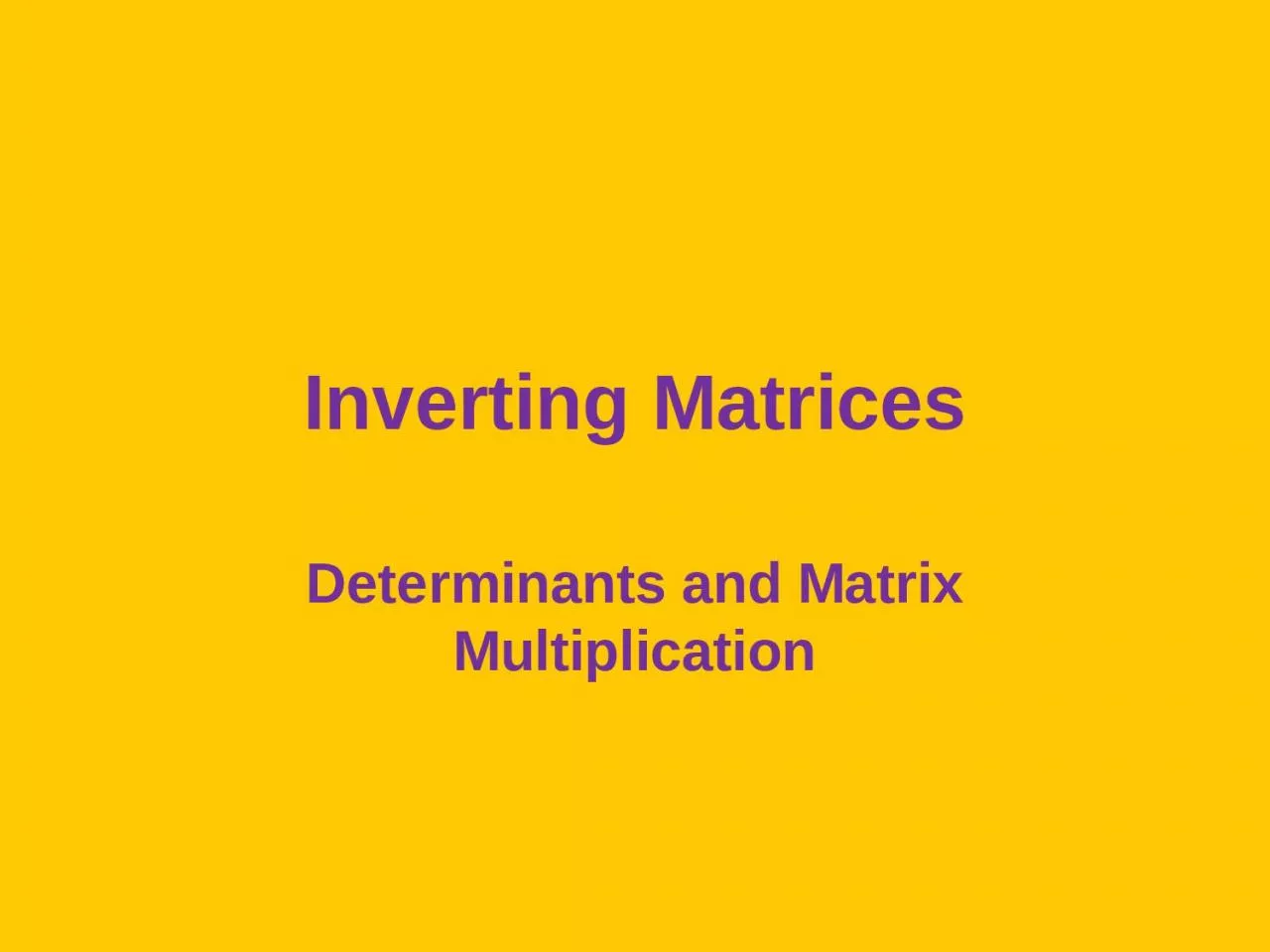

Determinants Square matrices have determinants which are useful in other matrix operations especially inversion For a secondorder square matrix A the determinant is Consider the following bivariate raw data matrix ID: 1027476
Download Presentation The PPT/PDF document "Inverting Matrices Determinants and Matr..." is the property of its rightful owner. Permission is granted to download and print the materials on this web site for personal, non-commercial use only, and to display it on your personal computer provided you do not modify the materials and that you retain all copyright notices contained in the materials. By downloading content from our website, you accept the terms of this agreement.
1. Inverting MatricesDeterminants and Matrix Multiplication
2. DeterminantsSquare matrices have determinants, which are useful in other matrix operations, especially inversion.For a second-order square matrix, A,the determinant is
3. Consider the following bivariate raw data matrixSubject #12345X1218324449Y13245from which the following XY variance-covariance matrix is obtained: XYX25621.5Y21.52.5
4. Think of the variance-covariance matrix as containing information about the two variables – the more variable X and Y are, the more information you have.Any redundancy between X and Y reduces the total amount of information you have -- to the extent that you have covariance between X and Y, you have less total information.
5. Generalized VarianceThe determinant tells you how much information the matrix has about the variance in the variables – the generalized variance,after removing redundancy among variables.We took the product of the variances and then subtracted the product of the covariances (redundancy).
6. Imagine a RectangleIts width represents information on XIts height represents information on YX is perpendicular to Y (orthogonal), thus rXY = 0.The area of the rectangle represents the total information on X and Y.With covariance = 0, the determinant = the product of the two variances minus 0.
7. Imagine a ParallelogramAllowing X and Y to be correlated with one another moves the angle between height and width away from 90 degrees.As the angle moves further and further away from 90 degrees, the area of the parallelogram is also reduced.Eventually to zero (when X and Y are perfectly correlated).
8.
9.
10.
11.
12.
13.
14.
15.
16.
17.
18. Consider This Data MatrixSubject #12345X1020304050Y12345 XYX25025Y252.5Variance-Covariance Matrix Since X and Y are perfectly correlated, the generalized variance is nil.
19. Identity MatrixAn identity matrix has 1’s on its main diagonal, 0’s elsewhere.
20. Inversion The inverted matrix is that which when multiplied by A yields the identity matrix. That is, AA1 = A1A = I.With scalars, multiplication by the inverse yields the scalar identity.Multiplication by an inverseis like division with scalars.
21. Inverting a 2x2 MatrixFor our original variance/covariance matrix:
22. Multiplying a Scalar by a MatrixSimply multiply each matrix element by the scalar (1/177.75 in this case).The resulting inverse matrix is:
23. AA1 = A1A = I
24. The Determinant of a Third-Order Square Matrix
25. Matrix Multiplication for a 3 x 3
26. SAS Will Do It For YouProc IML;reset print; display each matrix when created XY ={ enter the matrix XY256 21.5, comma at end of row21.5 2.5}; matrix within { }determinant = det(XY); find determinantinverse = inv(XY); find inverseidentity = XY*inverse; multiply by inversequit;
27. XY 2 rows 2 cols 256 21.5 21.5 2.5 DETERMINANT 1 row 1 col 177.75 INVERSE 2 rows 2 cols 0.0140647 -0.120956 -0.1209560 1.440225 IDENTITY 2 rows 2 cols 1 -2.22E-16 -2.08E-17 1